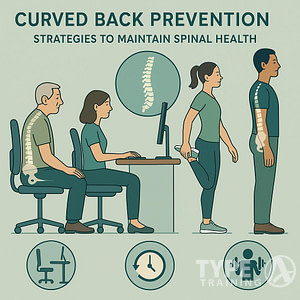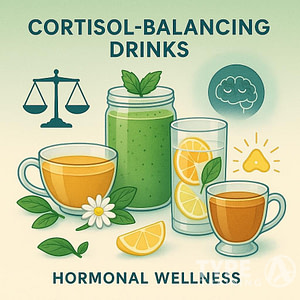The ketogenic diet has a high-fat, low-carb approach and offers many health benefits. It’s crucial to know which foods to enjoy and which high-carb options to replace to succeed on this diet.
For example, instead of traditional rice, you can use riced cauliflower. It provides a similar texture but fewer carbs.
Incorporating popular keto foods such as avocados, which are rich in healthy fats and fiber, can make your meals both nutritious and delicious. Almond flour can substitute wheat flour, making it easier to continue enjoying baked goods without compromising your diet. By exploring these alternatives, you can maintain variety and satisfaction in your meals.
Popular posts:
There are countless low-carb substitutes for high-carb foods, ensuring that you don’t have to give up your favorite meals. For instance, using zucchini chips in place of potato chips or pork rinds instead of bread crumbs can help you adhere to your ketogenic lifestyle effortlessly. These simple swaps can greatly enhance your dietary experience while keeping you on track.
Understanding the Keto Diet
The keto diet focuses on high-fat, low-carb intake to induce ketosis, where your body burns fat for energy instead of carbohydrates. This section covers the core principles, including how ketosis works, appropriate macronutrient ratios, and important health considerations.
Principles of Ketosis
Ketosis is a metabolic state induced by significant carbohydrate reduction. Normally, your body prefers carbs as its primary energy source. By limiting carbs to 20-50 grams a day, your body begins converting fat into energy, leading to ketosis.
During ketosis, ketones are produced as a byproduct of fat breakdown. This state can lead to more efficient fat burning and stable blood sugar levels. However, you need to strictly limit your carb intake and regularly monitor your body to reach and maintain ketosis.
Macronutrient Ratios
In a ketogenic diet, the macronutrient ratio is crucial for entering and staying in ketosis. You should get 70-75% of your daily calories from fats, 20-25% from protein, and 5-10% from carbohydrates.
Healthy fats like avocados, nuts, and olive oil are essential. Protein helps maintain muscle mass and overall health, but too much can impede ketosis. Carbohydrates are minimized, primarily coming from low-carb vegetables and some dairy. Keeping track of these ratios helps ensure you reap the benefits of ketosis.
Health Considerations
The keto diet can offer benefits like weight loss and improved blood sugar levels, but it’s not without risks. The initial phase may cause “keto flu,” characterized by fatigue and headaches as your body adapts to burning fat for fuel.
Long-term health effects should be considered. High-fat diets can impact cholesterol levels. Consult with a healthcare provider before starting, especially if you have existing health conditions. Proper hydration and electrolyte balance are also crucial to avoid potential side effects.
Keto-Friendly Foods
A ketogenic diet prioritizes high-fat, moderate-protein, and low-carb foods to support ketosis. Key foods for this diet include various meat and protein sources, dairy alternatives, healthy fats and oils, nuts and seeds, and specific fruits and vegetables.
Meat and Protein Sources
Keto-friendly meat and protein sources are vital due to their low-carb content and essential nutrients.
Common Options:
- Bacon and pork rinds are popular for adding flavor and satisfying crunch.
- Eggs offer high-quality protein and healthy fats.
Seafood:
- Salmon
- Mackerel
- Sardines
Poultry:
- Chicken breast
- Turkey
Other Meats:
- Beef
- Pork
Table:
| Protein Source | Description |
|---|---|
| Bacon | Rich in fats |
| Eggs | High-quality protein |
| Salmon | Contains healthy omega-3s |
| Chicken Breast | Lean protein |
| Beef | Various cuts are keto |
Dairy and Alternatives
Dairy on a keto diet includes full-fat options and certain substitutes.
Common Dairy:
- Cheese (cheddar, mozzarella, brie)
- Heavy cream useful in sauces and coffee.
Alternatives:
- Almond milk (unsweetened)
- Coconut milk
Table:
| Dairy/Alternative | Description |
|---|---|
| Cheese | Full-fat varieties best |
| Heavy Cream | Low carb, high-fat |
| Almond Milk | Unsweetened preferable |
| Coconut Milk | Good for cooking |
Fats and Oils
Healthy fats are central to the ketogenic diet for energy and satiety.
Common Fats:
- Ghee
- Butter
- Olive oil
- Avocado oil
Specialty Oils:
- Coconut oil
- MCT oil for quick energy
Table:
| Fat/Oil | Description |
|---|---|
| Ghee | Clarified butter, high smoke point |
| Olive oil | Best used cold or for light sautéing |
| Avocado Oil | Versatile use, neutral flavor |
| Coconut Oil | Solid at room temperature |
| MCT Oil | Adds to smoothies, coffee |
Nuts and Seeds
Nuts and seeds offer healthy fats, protein, and fiber for keto dieters.
Recommended Nuts:
- Almonds
- Macadamia nuts
- Pecans
Seeds:
- Chia seeds
- Flaxseeds
Table:
| Nut/Seed | Description |
|---|---|
| Almonds | Good source of protein |
| Macadamia Nuts | High in healthy fats |
| Pecans | Low in carbs, high in fats |
| Chia Seeds | Rich in fiber, omega-3s |
| Flaxseeds | Contains lignans, fiber |
Fruits and Vegetables
Low-carb fruits and vegetables are essential to a balanced keto diet.
Recommended Vegetables:
- Cauliflower versatile for various keto dishes.
- Zucchini can be spiralized as a pasta substitute.
- Leafy greens like spinach and kale are nutrient-dense.
Fruits:
- Avocados are rich in healthy fats.
- Berries like raspberries and strawberries in moderation.
Table:
| Fruit/Vegetable | Description |
|---|---|
| Cauliflower | Low-carb, great rice substitute |
| Zucchini | Used in noodles and baked goods |
| Leafy Greens | Spinach, kale, nutrient-dense |
| Avocados | High in monounsaturated fats |
| Berries | Low-sugar, use sparingly |
Low-Carb Alternatives for High-Carb Favorites
Transitioning to a keto lifestyle doesn’t mean you have to give up your favorite foods. There are plenty of low-carb alternatives that can fit seamlessly into your meal plan. This allows you to enjoy a diverse and satisfying diet.
Breads and Wraps
Bread can be a tough item to part with, but keto-friendly alternatives are available.
Lettuce wraps are a great option, with only 0.5g net carbs in 2 large leaves. If you miss grain-filled bread, you can try low-carb 3-seed bread, coconut flour bread, or almond flour bread.
| High-Carb Food | Keto Alternative |
|---|---|
| White Bread | Coconut Flour Bread |
| Whole Grain Bread | Almond Flour Bread |
| Tortillas and Wraps | Lettuce Wraps |
Rice and Pasta
Standard rice and pasta are high in carbs, but there are keto substitutes that can satisfy your cravings.
Cauliflower rice serves as a versatile replacement for regular rice. For pasta, alternatives like zucchini noodles, shirataki noodles, and spaghetti squash make excellent low-carb choices.
| High-Carb Food | Keto Alternative |
|---|---|
| White Rice | Cauliflower Rice |
| Spaghetti | Zucchini Noodles |
| Fettuccine | Shirataki Noodles |
Snacks and Crisps
Finding keto-friendly snacks can be simple with several crunchy, satisfying options available.
Zucchini chips are a great alternative to the traditional potato chip. For something even crunchier, try pork rinds or cheese crisps, both of which offer a satisfying crunch without the carbs.
| High-Carb Food | Keto Alternative |
|---|---|
| Potato Chips | Zucchini Chips |
| Corn Chips | Pork Rinds |
| Crackers | Cheese Crisps |
Sweet Treats and Desserts
Craving sweets is common, but you don’t have to derail your keto diet. Erythritol, stevia, and monk fruit are keto-approved sweeteners.
For baked goods, use almond flour or coconut flour to keep desserts low-carb. You can create delicious treats without relying on sugar or grain-based flours.
| High-Carb Food | Keto Alternative |
|---|---|
| Brownies and Cakes | Coconut Flour Brownies |
| Cookies | Almond Flour Cookies |
| Sugary Treats | Stevia-sweetened Treats |
Substitutes for Common Ingredients
When following a keto diet, finding the right substitutes for high-carb ingredients is crucial to staying in ketosis. This section highlights various keto-friendly swaps for flour, sugar, and sauces, making it easier to enjoy your favorite recipes without compromising your diet.
Flour and Baking Essentials
Replacing high-carb flours with keto-friendly options is essential for low-carb baking.
| Common Ingredient | Keto Substitute | Usage |
|---|---|---|
| Wheat Flour | Almond Flour | Great for pastries and cakes |
| All-Purpose Flour | Coconut Flour | Works well in baking; 1/4 cup for every 1 cup of regular flour |
| Bread Crumbs | Crushed Pork Rinds | Perfect for breading and topping casseroles |
| Thickening Agents (e.g., Cornstarch) | Psyllium Husk Powder | Effective thickener in soups and sauces |
Almond flour and coconut flour are low in carbs and high in fiber, making them excellent choices for keto baking. Almond flour adds a rich, nutty flavor, while coconut flour requires less quantity due to its high absorbency.
Sugars and Sweeteners
Traditional sugars can quickly kick you out of ketosis. Here are some alternatives to keep your recipes sweet without adding carbs.
| Common Ingredient | Keto Substitute | Usage |
|---|---|---|
| White Sugar | Swerve | 1:1 ratio; suitable for most baking and cooking needs |
| Brown Sugar | Xylitol | Sweetens like sugar; good for baking |
| Honey | Erythritol | Offers zero net carbs and is perfect for desserts |
| Maple Syrup | Monk Fruit Sweetener | Excellent for sweetening drinks and baked goods |
Swerve and Xylitol mimic the taste and texture of sugar but without the added carbs. Xylitol is especially good for baking, providing similar moisture content to sugar. Meanwhile, Erythritol is a go-to for desserts as it doesn’t spike blood sugar levels.
Sauces and Seasonings
High-carb sauces can sneak into your meals if you’re not careful. These swaps help you maintain flavor without the carbs.
| Common Ingredient | Keto Substitute | Usage |
|---|---|---|
| Soy Sauce | Coconut Aminos | Similar taste; lower in sodium |
| Ketchup | Sugar-Free Ketchup | Provides the same tangy flavor without the sugar |
| BBQ Sauce | Keto-Friendly BBQ Sauce | Ideal for marinating and grilling |
| Cornstarch (for thickening) | Xanthan Gum | Small amounts needed; thickens sauces effectively |
Coconut aminos is a popular substitute for soy sauce, especially since it’s lower in sodium. Sugar-free ketchup delivers the familiar taste of regular ketchup without the extra carbs. Meanwhile, Xanthan gum serves as a powerful thickening agent, ideal for soups and gravies.
Additional Keto-Compliant Food Choices
When following a ketogenic diet, it’s crucial to know which drinks and dairy or egg alternatives fit into your low-carb, high-fat lifestyle. Below, you’ll find specifics about keto-friendly beverages and suitable substitutes for dairy and eggs.
Beverages
Staying hydrated with the right beverages can greatly impact your ketogenic journey. Here are some options that are both delicious and compliant with keto guidelines.
| Beverage | Details |
|---|---|
| Water | The ultimate zero-carb choice. Consider adding a slice of lemon or lime for flavor. |
| Tea | Green, black, and herbal teas are excellent choices if unsweetened. |
| Coffee | Black coffee or with small amounts of heavy cream or coconut milk. |
| Nut Milks | Options like almond milk should be unsweetened. |
| Bone Broth | Provides essential electrolytes without adding carbs. |
| Kombucha | Choose varieties with less than 2 grams of carbs per serving. |
Avoid sugary drinks and opt for those with electrolyte benefits and minimal to no carbohydrates.
Dairy and Egg Alternatives
Finding keto-friendly substitutes for dairy and eggs can help maintain variety in your meals while adhering to dietary restrictions. Several options can fulfill these needs without adding extra carbs.
| Product | Keto Alternative |
|---|---|
| Milk | Almond milk or coconut milk, both unsweetened. |
| Cheese | Look for cheese alternatives made from nuts or soy that are low in carbs. |
| Yogurt | Choose unsweetened coconut or almond yogurt. |
| Eggs | Utilize egg substitutes made from chia seeds or flaxseeds for vegan alternatives. |
| Cream | Coconut cream serves as a high-fat, low-carb option. |
Meal Planning and Preparation
Meal planning and preparation for a keto diet involve selecting the right foods, safely storing them, and knowing what to do when eating out. With the right approach, you can enjoy a variety of delicious meals while staying within your carbohydrate limits.
Keto Meal Ideas
Incorporating a variety of keto meals can keep your diet exciting and satisfying.
Lettuce wraps are an excellent substitute for sandwiches, providing a low-carb alternative with only 0.5g net carbs in two large leaves.
For breakfast, consider making keto pancakes or keto waffles using almond or coconut flour.
Soups and zoodles (zucchini noodles) are great options for lunch or dinner.
For protein, grilled chicken, salmon, and beef are all keto-friendly when paired with healthy fats like avocado or olive oil. By rotating these options, you can maintain a diverse and enjoyable meal plan.
Food Storage and Safety
Proper food storage is crucial to maintain the freshness and safety of your keto meals.
Store perishable items like meat, dairy, and cooked vegetables in sealed containers in the refrigerator.
Lettuce leaves for wraps should be stored in a moisture-proof bag with a paper towel to absorb excess moisture.
Batch cooking and freezing meals like keto waffles and soups can save time and ensure you always have keto-friendly options on hand.
Label your containers with the preparation date to keep track of freshness. When reheating, ensure food reaches a safe temperature to avoid any risk of foodborne illnesses.
Eating Out on a Keto Diet
Navigating dining out can be challenging but manageable with some strategies.
Look for dishes that can be easily modified, such as burgers without the bun or salads with lettuce wraps instead of bread.
Many restaurants will accommodate requests for vegetables or extra greens in place of starchy sides.
When in doubt, choose grilled meats or fish with a side of steamed vegetables.
Ask for oils or dressings on the side to control your fat intake. Some places may even offer a keto-friendly version of their meals if you ask.
Managing Keto Lifestyle
Adopting a keto lifestyle involves significant changes that require careful planning. You need to navigate social situations, adapt to and maintain ketosis, and ensure proper nutrient intake through supplementation.
Navigating Social Situations
Social gatherings can present challenges when you follow a keto diet.
Informing friends and family about your dietary restrictions can make it easier to find suitable food options at parties or events.
Bring your own keto-friendly dishes to social gatherings. This ensures you have something to eat and introduces others to keto-friendly foods.
Scan menus ahead of time if you’re dining out and look for meals that are high in fats and proteins but low in carbs.
Keto Adaptation and Maintenance
Your body needs time to adapt to a ketogenic diet, known as keto adaptation.
Initially, you might experience the “keto flu,” with symptoms such as fatigue, headaches, and irritability. These symptoms are temporary and typically resolve within a week as your body transitions to using fats for energy instead of carbohydrates.
Maintain ketosis by sticking to your macronutrient goals.
Regularly monitor your ketone levels using urine strips, breath analyzers, or blood meters. Adjust your diet if necessary to stay within your carbohydrate limit while ensuring enough fat intake.
Supplementation and Nutrient Intake
A keto diet can sometimes lead to nutrient deficiencies.
To avoid this, focus on a variety of whole, nutrient-dense foods. Include leafy greens, avocados, nuts, and seeds in your meals to boost your intake of vitamins and minerals.
Consider supplementation to fill in nutritional gaps.
Magnesium, potassium, and sodium are vital electrolytes often needed due to their decreased intake on a keto diet. Omega-3 fatty acids, found in fish oil supplements, can also support overall health.
Frequently Asked Questions
This section explores what foods you can eat on a keto diet, foods to avoid, where to find lists of keto-friendly foods, how it aids weight loss, best substitutes for high-carb foods, and which foods are surprisingly low in carbs.
What can beginners eat on a keto diet?
Beginners can enjoy unprocessed meat, eggs, fish, seafood, and above-ground vegetables like leafy greens.
Healthy fats such as butter and olive oil are also staples. Incorporate some nuts and cheeses in moderation.
What foods should be avoided when following a keto diet?
Avoid high-carb foods like bread, pasta, rice, and sugary snacks.
Starchy vegetables like potatoes and corn, and most fruits should also be limited. Skip sweetened beverages and processed foods with hidden sugars.
Where can I find a comprehensive list of keto-friendly foods?
For a detailed list of keto-friendly foods, visit the Diet Doctor website. They provide an extensive guide on suitable foods for a keto lifestyle, categorized for easy reference.
How does a keto diet aid in weight loss?
A keto diet shifts your body into ketosis, where it burns fat for energy instead of carbohydrates.
This metabolic state can lead to significant weight loss by utilizing stored fat as the primary fuel source.
What are the best substitutes for high-carb foods on a keto diet?
Replace high-carb foods with low-carb alternatives.
Use cauliflower rice instead of traditional rice, or zucchini noodles instead of pasta. Opt for almond flour and coconut flour in baking to keep your meals keto-friendly.
Which foods are unexpectedly low in carbohydrates and suitable for keto?
Some fruits and vegetables have surprisingly low carbs. Avocados, for instance, contain only about 3 grams of net carbs per cup. Berries and coconut are also good options with low net carb counts, making them suitable for keto.
Learn more from Everyday Health.















